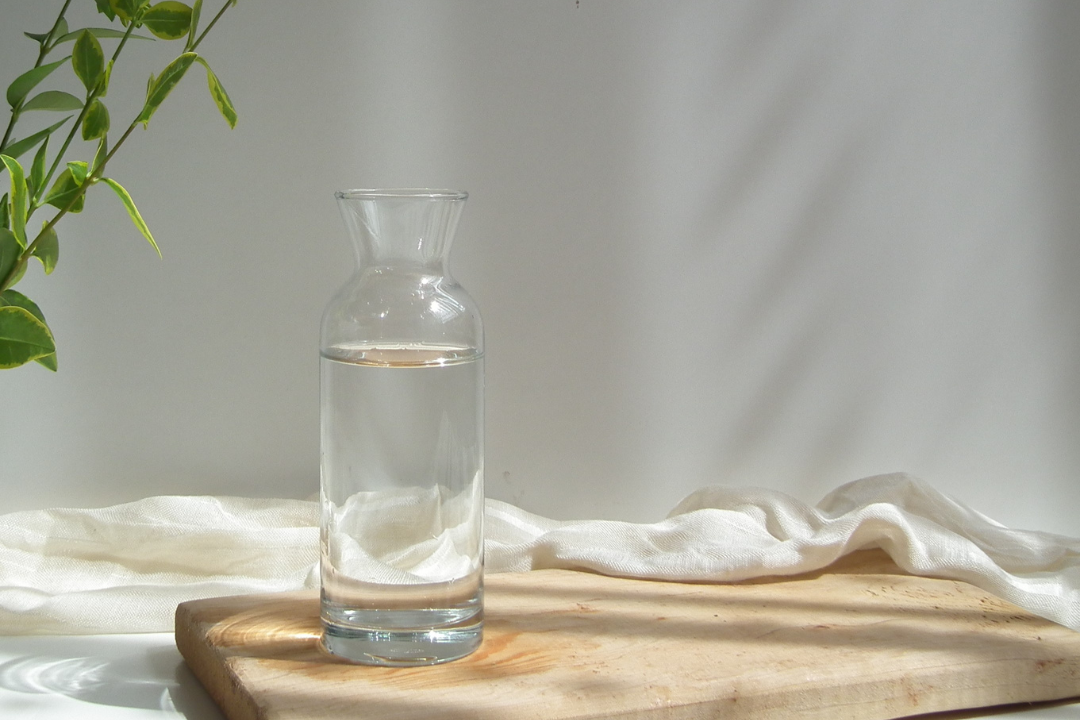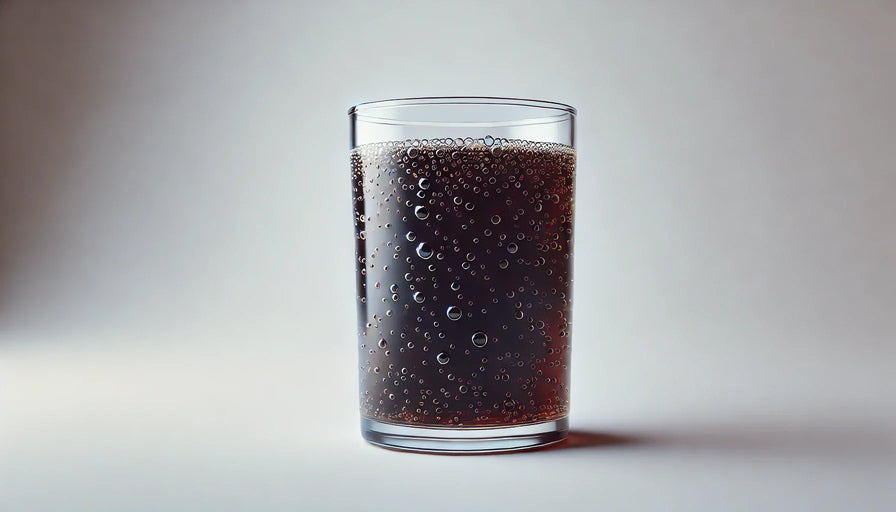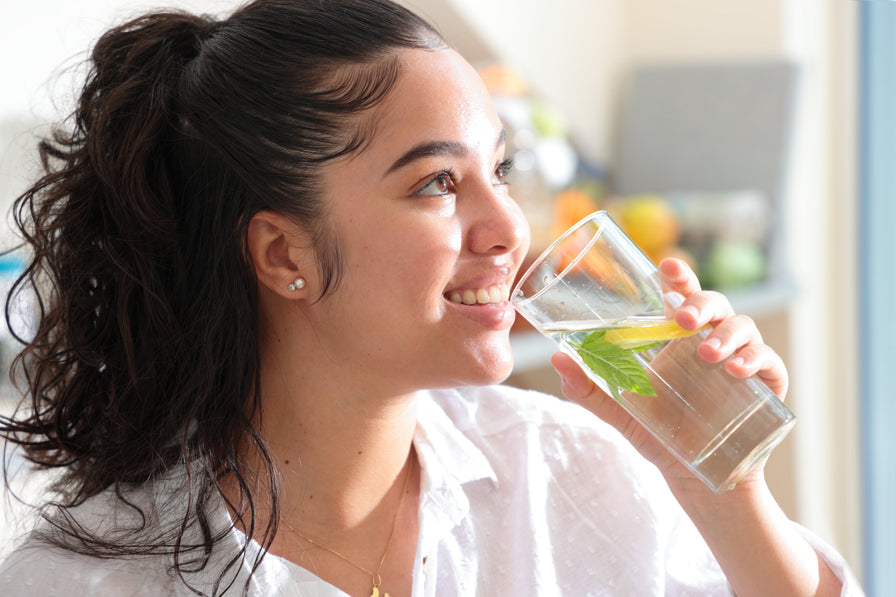
Does Water Go Stale?

Does water go stale?
Water itself does not go stale in the traditional sense, as pure water (H2O) is a stable compound. However, when left exposed to air, water can absorb carbon dioxide, slightly altering its pH and giving it a different taste.
Staying hydrated is essential for maintaining overall health and well-being. Water plays a critical role in regulating body temperature, supporting digestion, and ensuring that vital organs function optimally.
While many of us focus on drinking enough water daily, have you ever wondered if the water you leave sitting out can go stale? This blog explores the science behind water's stability and what changes, if any, occur when it's left exposed.
Table of contents
Factors that make water go stale
Several factors contribute to water becoming stale over time:
- Exposure to air: When water is exposed to air, it can absorb carbon dioxide, which may alter its taste and lower its pH level slightly, making it less pleasant to drink.
- Sunlight exposure: Direct sunlight can encourage microbial growth, especially if the water is not stored in a sealed, opaque container.
- Temperature: High temperatures can accelerate microbial growth and reduce the shelf life of stored water.
- Unclean storage conditions: Contaminated or improperly cleaned storage containers can introduce bacteria or chemicals into the water, leading to quicker spoilage.
- Chemical leaching: If water is stored in certain plastic containers over time, chemicals like BPA or phthalates can leach into the water, especially under heat.
According to a study by the World Health Organization (WHO), an estimated 2 billion people globally consume water contaminated with feces, leading to serious health risks.
Proper storage practices are essential to keep water fresh and safe for an extended period.
Related read: What is Aerated Water & Why is it Important?

Is stale water safe to drink?
Generally, stale water is safe to drink if it has been kept in a clean, covered container and has not been contaminated. The change in taste is typically due to atmospheric gases, such as carbon dioxide, dissolving in the water, which does not pose a significant health risk.
However, there are instances where drinking stale water may not be advisable:
- If the water has been left uncovered for an extended period.
- If there is visible mold, algae, or discoloration in the water or the container.
- If the container used for storage is unclean or made of materials prone to leaching chemicals, such as certain plastics or metals.
- If the water has a strange or unpleasant odor.
- If it has been stored in high temperatures for a prolonged period, increasing bacterial growth risks.
Possible side effects of drinking contaminated stale water:
- Upset stomach or nausea.
- Diarrhea caused by bacterial contamination.
- Mild to severe dehydration due to illness.
- Exposure to harmful chemicals if stored improperly.
- Fatigue or weakness due to gastrointestinal distress.

How long does it take for water to become stale?
The time it takes for water to become stale depends on factors such as storage methods and exposure to environmental conditions. When stored in a clean, sealed container in a cool, dark location, water can remain safe to drink for up to six months.
However, if left in an open container, exposed to sunlight, or stored at high temperatures, it can develop an unpleasant taste or even harmful microbial growth within just a few days. Proper storage is key to maintaining water quality over time.
Is it safe to drink flat sparkling water?
Flat sparkling water is generally safe to drink, although its taste and texture may have changed due to the loss of carbonation. The effervescence in sparkling water comes from dissolved carbon dioxide (CO2), which creates that soda-like crispy fizz.
When the water becomes flat, it simply means the CO2 has escaped, leaving behind regular still water. However, similar to stale water, the conditions under which sparkling water is stored can influence its quality.
If left in an open container for prolonged periods, sparkling water can be exposed to external contaminants or microbial growth, particularly if stored at high temperatures.
Additionally, without CO2, the water may lose some of its acidic quality, which can slightly alter its taste and make it more susceptible to bacterial growth over time.

5 Tips and tricks to keep water from going stale
- Use airtight containers
- Keep water in a cool, dark place
- Use food-grade storage materials
- Rotate stored water regularly
- Sterilize containers before refilling
1. Use airtight containers
Store water in airtight containers to minimize exposure to air and prevent carbon dioxide from altering its taste. This also reduces the chances of microbial contamination.
2. Keep water in a cool, dark place
Maintain water storage in a cool, shaded area to slow microbial growth and preserve freshness. Avoid direct sunlight exposure, as it can degrade the quality of water over time.
3. Use food-grade storage materials
Always choose food-grade containers for storing water. Glass or BPA-free plastic containers are ideal options to prevent chemical leaching that can taint the water.
4. Rotate stored water regularly
Even properly stored water can lose freshness over time. Rotating your water supply every six months ensures you always have access to fresh and safe drinking water.
5. Sterilize containers before refilling
Thoroughly clean and sterilize your storage containers before refilling them. This step eliminates lingering bacteria or contaminants that could spoil the water.

Myths about stale water
Boiling restores stale water completely
While boiling kills most bacteria and viruses, it does not remove unpleasant tastes or odors caused by chemical changes.
Adding salt or baking soda can 'freshen' water
These additives may mask the taste but don’t actually restore water's original freshness. Plus, adding too much salt or baking soda can make water unsafe to drink.
Stale water is inherently unsafe to drink
Stale water is not always unsafe but should be assessed for contamination before consumption. Proper storage and regular rotation can keep water fresh and safe to drink for an extended period.
Summary
Proper water storage is essential for maintaining freshness and safety over time. Regularly rotating your supply, using clean containers, and understanding common myths about stale water can help ensure access to drinkable water when needed.
By adhering to these guidelines, you can effectively manage your water supply for long-term use.
Recommended reading

How to Give Back During Thanksgiving 2025
Key takeaways Thanksgiving is a time to express gratitude and share with those in need. From volunteering at local shelters to donating food and essentials, there are numerous ways to give back to...

What Does Carbonation Do to Your Body?
What does carbonation do to your body? Carbonation alone typically has minimal effects; however, it can cause bloating and discomfort for some, and it may worsen acid reflux due to carbon dioxide ...

What Are the Health Benefits of Sparkling Water?
Summary Sparkling water isn't just a refreshing drink—it comes with surprising health benefits too. From aiding digestion to improving hydration, discover how sparkling water can be a healthy addi...